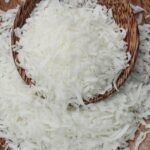CASHEW NUT SHELL OIL

The Role of Tapioca Starch in Ketchup
Tapioca starch is an increasingly popular ingredient in the food industry due to its versatility, neutral flavor, and excellent thickening properties. Its application in ketchup production offers several benefits that can enhance the texture, stability, and overall quality of the condiment. This article explores how tapioca starch is used in ketchup, its benefits, and its impact on the final product.
Table of Contents
ToggleBenefits of Using Tapioca Starch in Ketchup
Thickening Agent: Tapioca starch is an effective thickening agent, providing a smooth and consistent texture to ketchup. It helps achieve the desired viscosity without altering the flavor, ensuring that the ketchup maintains its characteristic consistency.
Stability and Shelf-Life: The inclusion of tapioca starch can improve the stability of ketchup, preventing the separation of ingredients over time. This results in a longer shelf-life and a more appealing product for consumers.
Gloss and Appearance: Tapioca starch contributes to the glossy appearance of ketchup, making it visually more attractive. This is an important factor in consumer appeal and product differentiation.
Clean Label: As a natural ingredient, tapioca starch is often perceived as a clean label alternative to synthetic thickeners and stabilizers. This appeals to health-conscious consumers seeking products with fewer artificial additives.
Gluten-Free Option: For those with gluten sensitivities or celiac disease, tapioca starch provides a gluten-free thickening option, broadening the market for gluten-free ketchup products.


How Tapioca Starch is Used in Ketchup Production
Incorporation Process
-
Preparation: Tapioca starch is typically mixed with cold water to create a slurry. This helps prevent clumping and ensures even distribution throughout the ketchup mixture.
-
Cooking: The starch slurry is added to the other ketchup ingredients, including tomatoes, vinegar, sugar, salt, and spices. The mixture is then heated, which activates the thickening properties of the starch.
-
Homogenization: After cooking, the ketchup is often homogenized to achieve a smooth and uniform consistency. This step ensures that the tapioca starch is fully integrated and that the final product has the desired texture.
Optimal Usage Levels
The amount of tapioca starch used in ketchup varies depending on the desired thickness and the formulation of other ingredients. Typically, it ranges from 1% to 3% of the total weight of the ketchup. Adjustments can be made based on specific texture and stability requirements.
Impact on Final Product
Texture and Mouthfeel
Tapioca starch imparts a smooth and creamy texture to ketchup, enhancing the mouthfeel without being overly thick or gummy. This is crucial for consumer satisfaction, as the texture is a key attribute in the overall sensory experience of ketchup.
Flavor Retention
One of the significant advantages of using tapioca starch is its neutral flavor profile. Unlike some other thickeners, it does not interfere with the natural taste of tomatoes and spices, ensuring that the ketchup retains its intended flavor.
Consumer Perception
As consumers become more health-conscious and aware of food ingredients, the use of natural thickeners like tapioca starch can positively influence their perception of the product. Brands that highlight the use of natural and clean label ingredients may find an edge in the competitive market.
Conclusion
Tapioca starch plays an indispensable role in ketchup production, offering numerous benefits that enhance the overall quality and appeal of the final product. Its ability to improve texture, enhance stability, and align with consumer preferences for natural, gluten-free ingredients makes it an invaluable component in modern ketchup formulations. As consumer trends continue to evolve towards clean label and health-conscious products, tapioca starch provides a versatile and effective solution for manufacturers looking to meet these demands. By incorporating tapioca starch, ketchup manufacturers can ensure that their products not only maintain their classic appeal but also cater to the discerning tastes and dietary needs of contemporary consumers.












